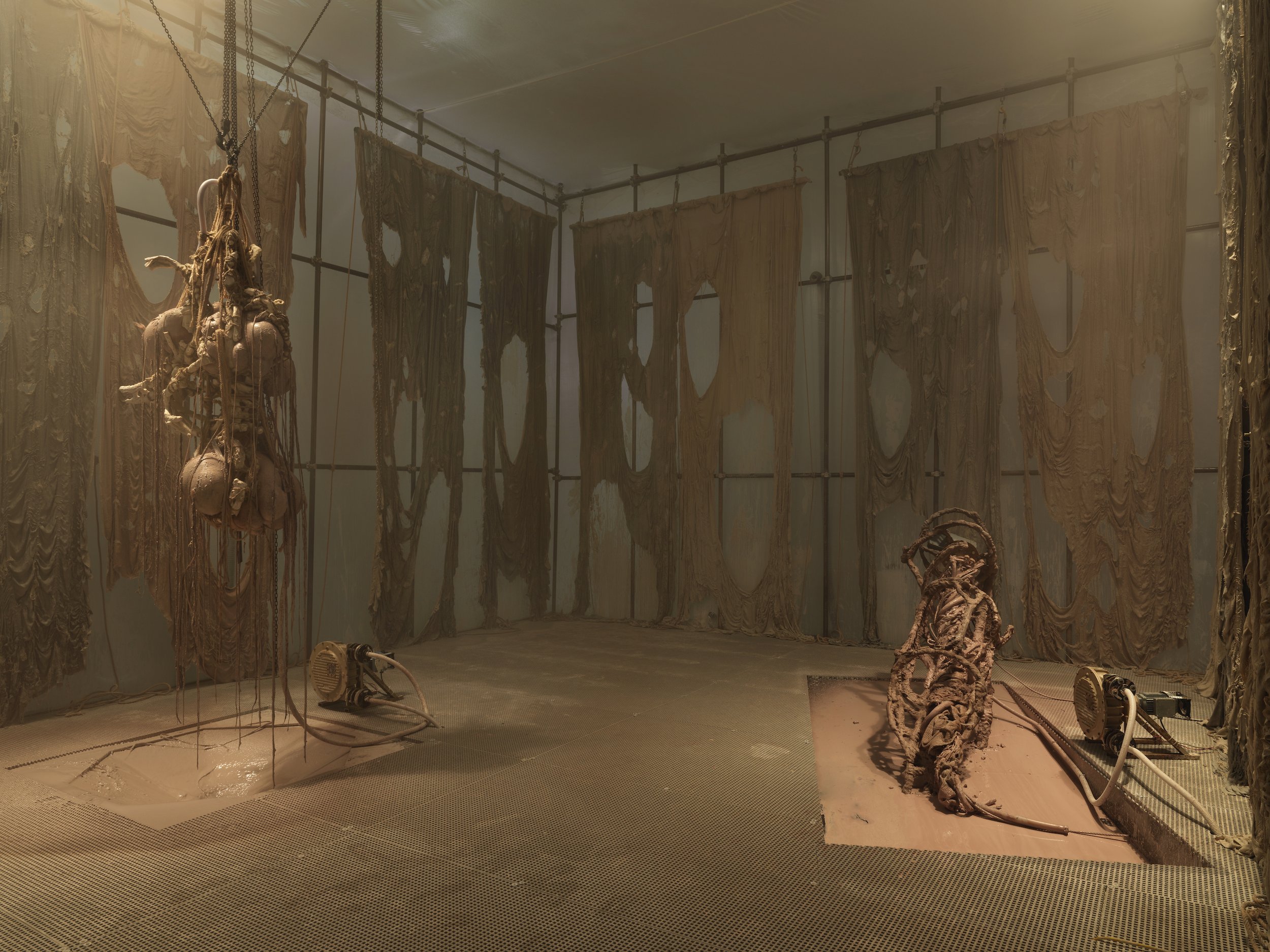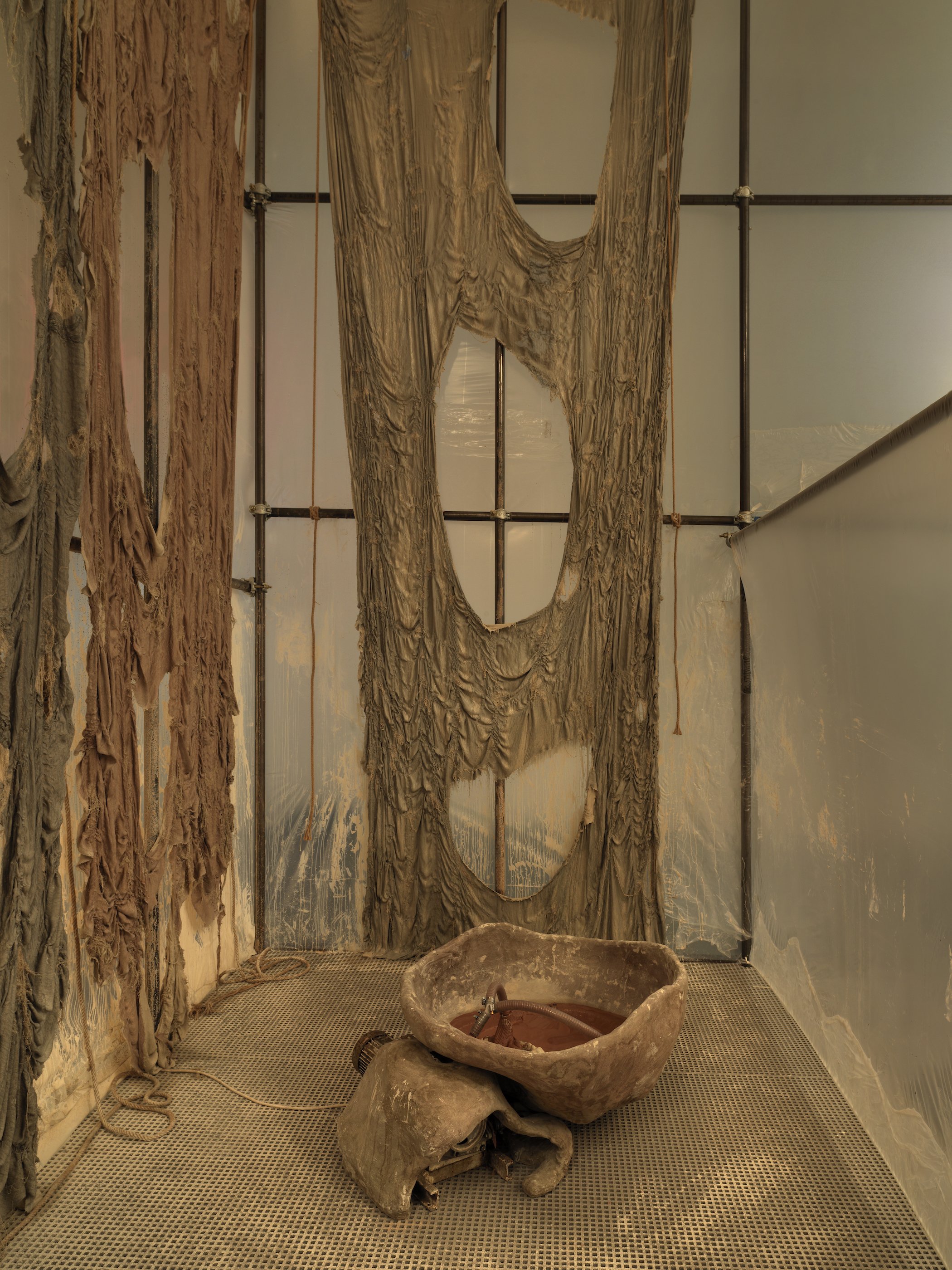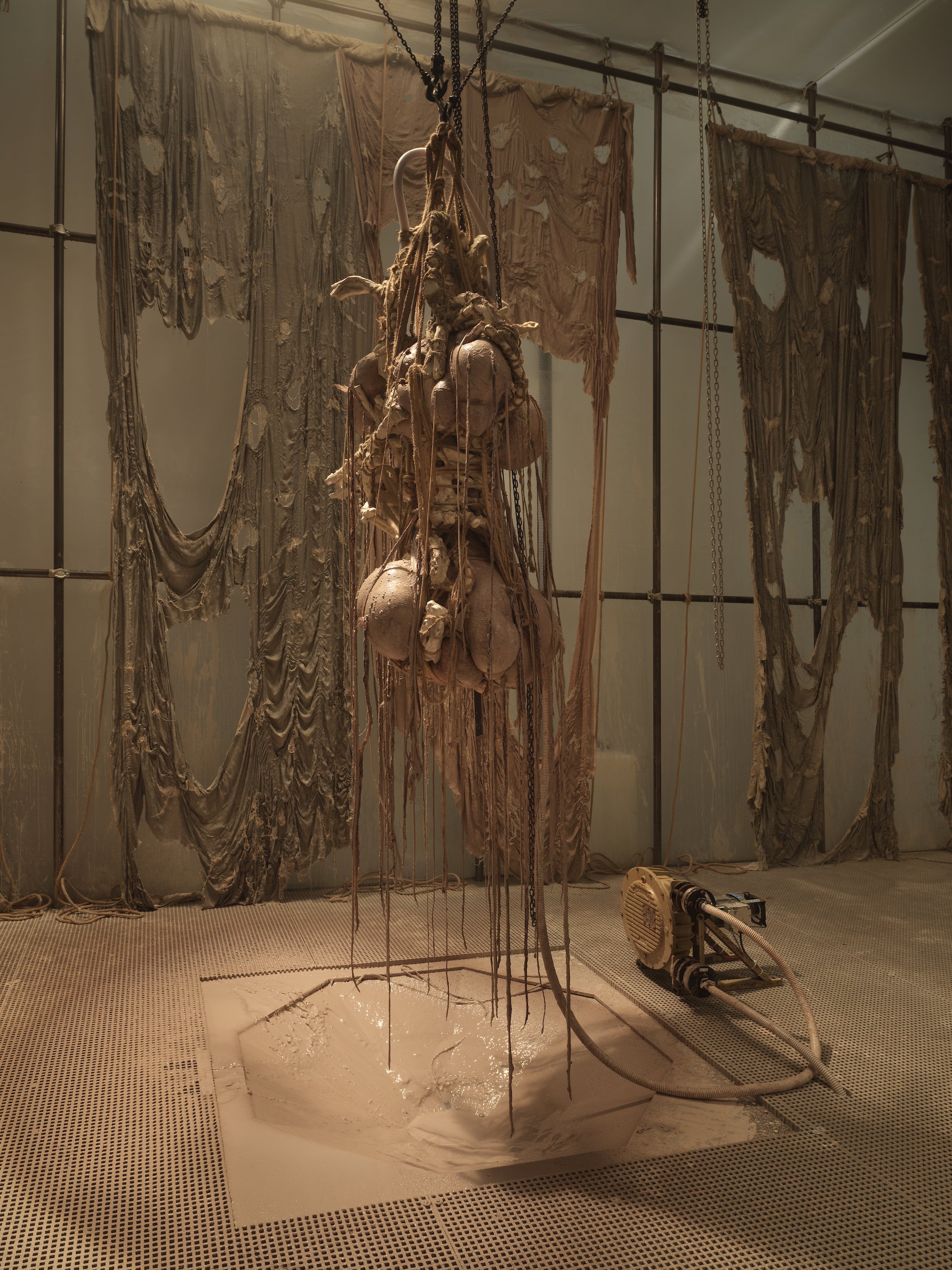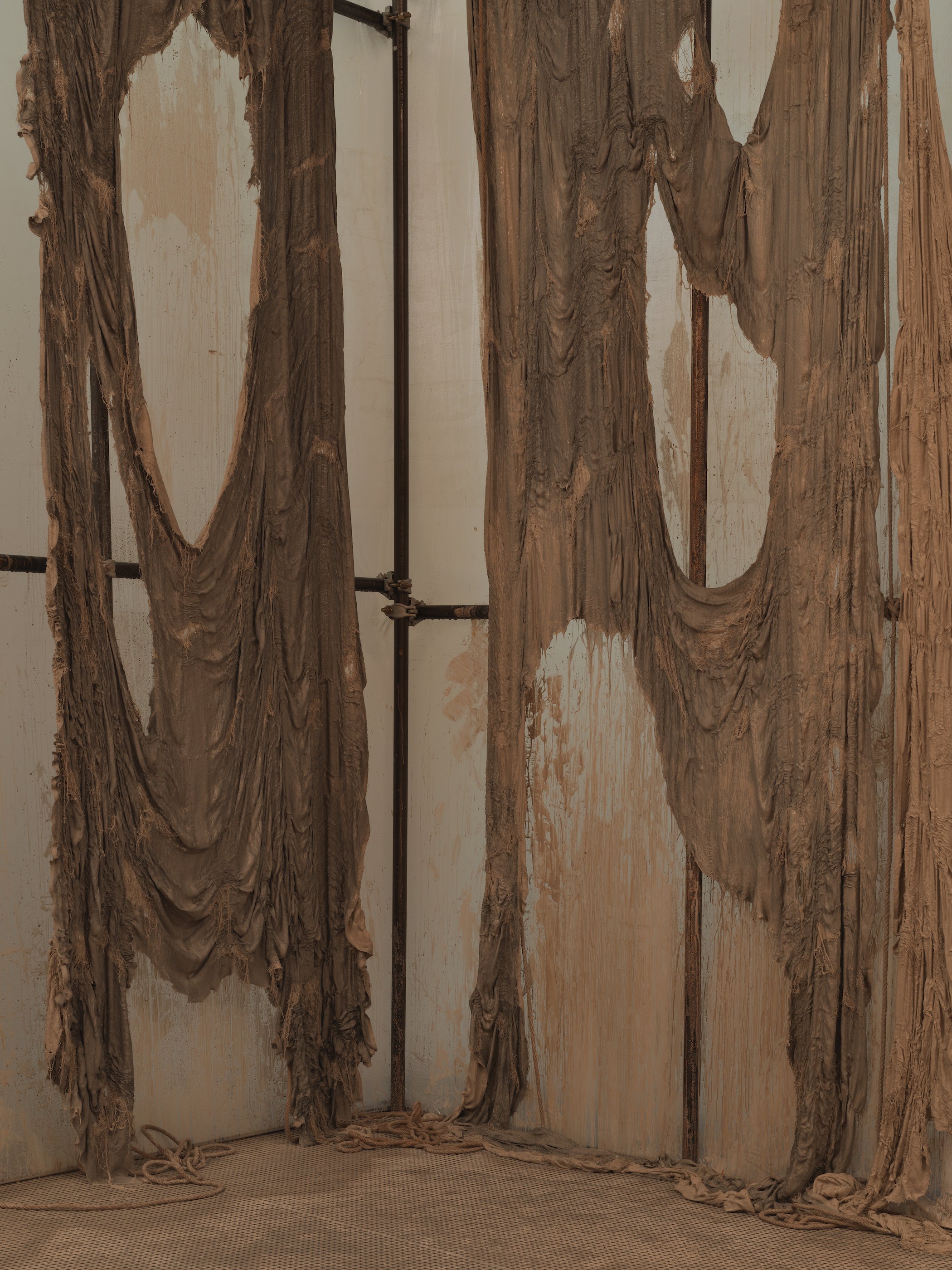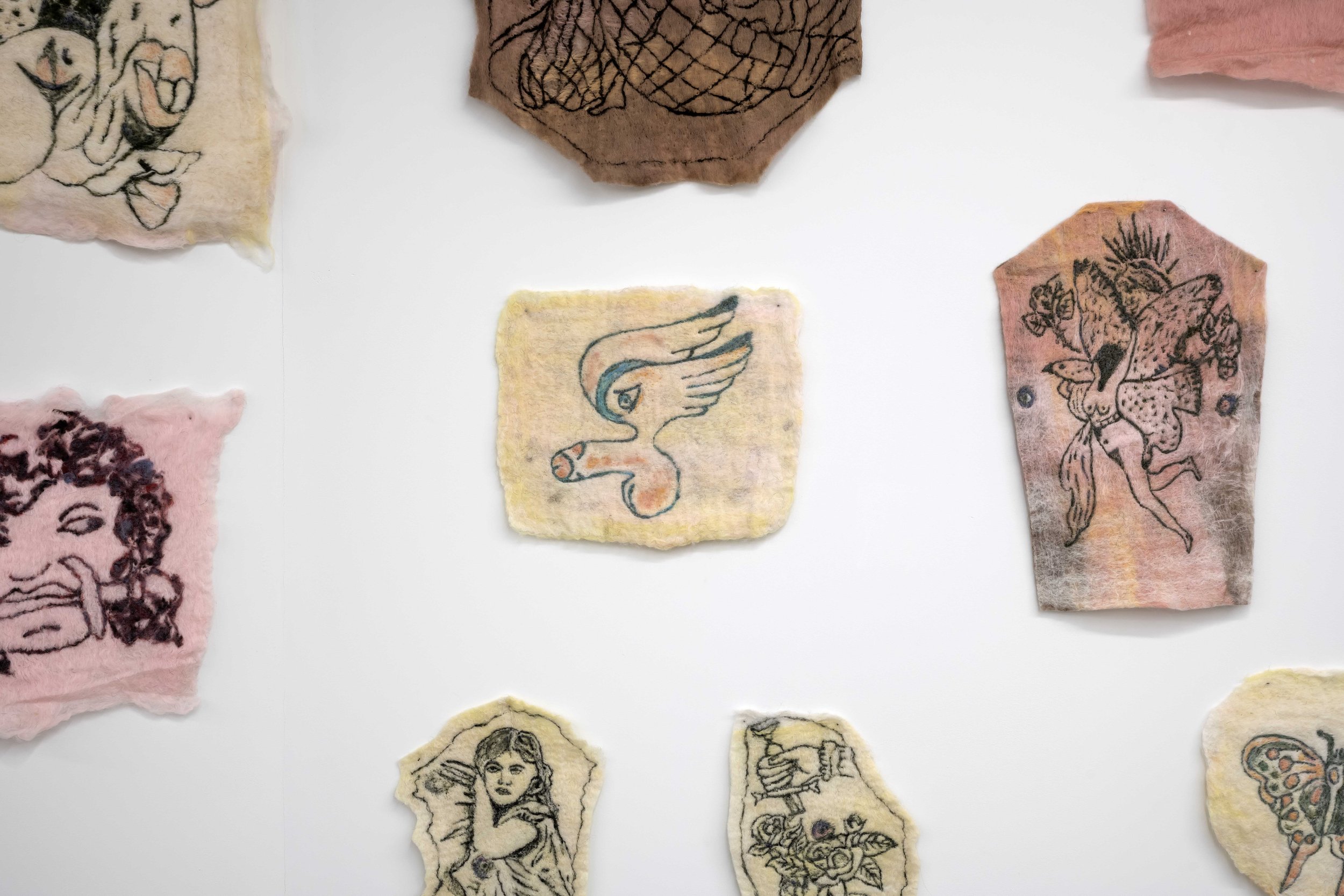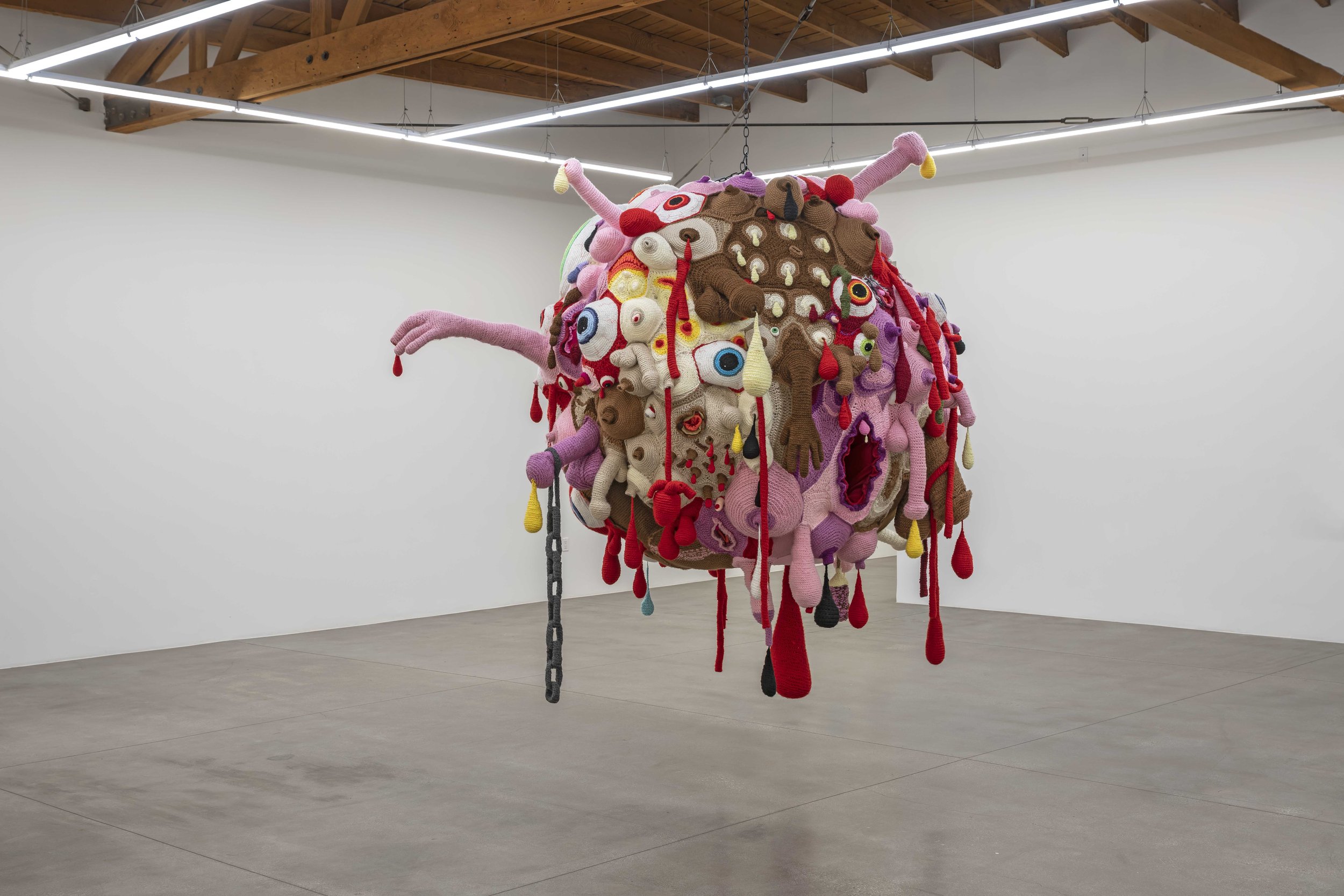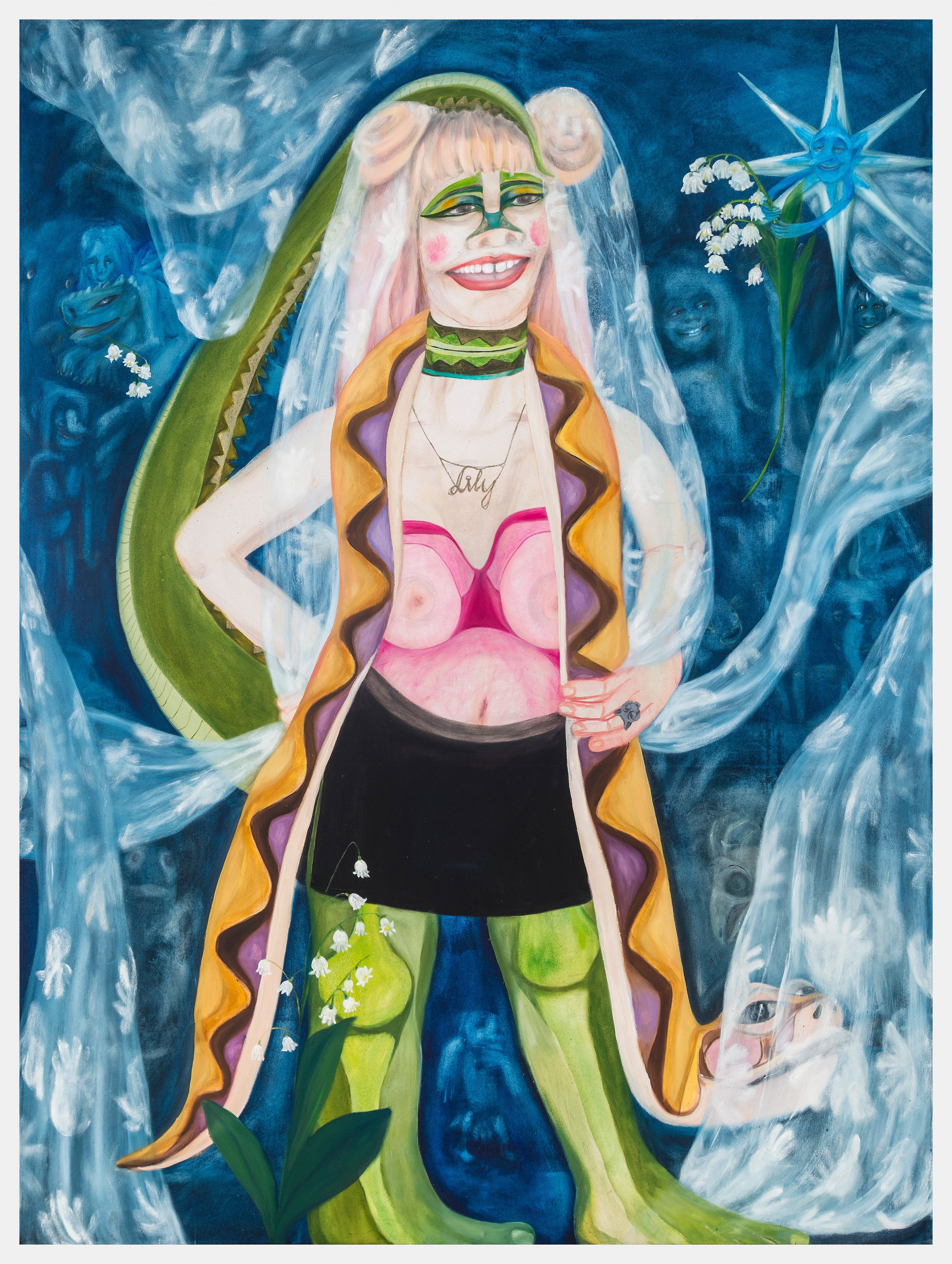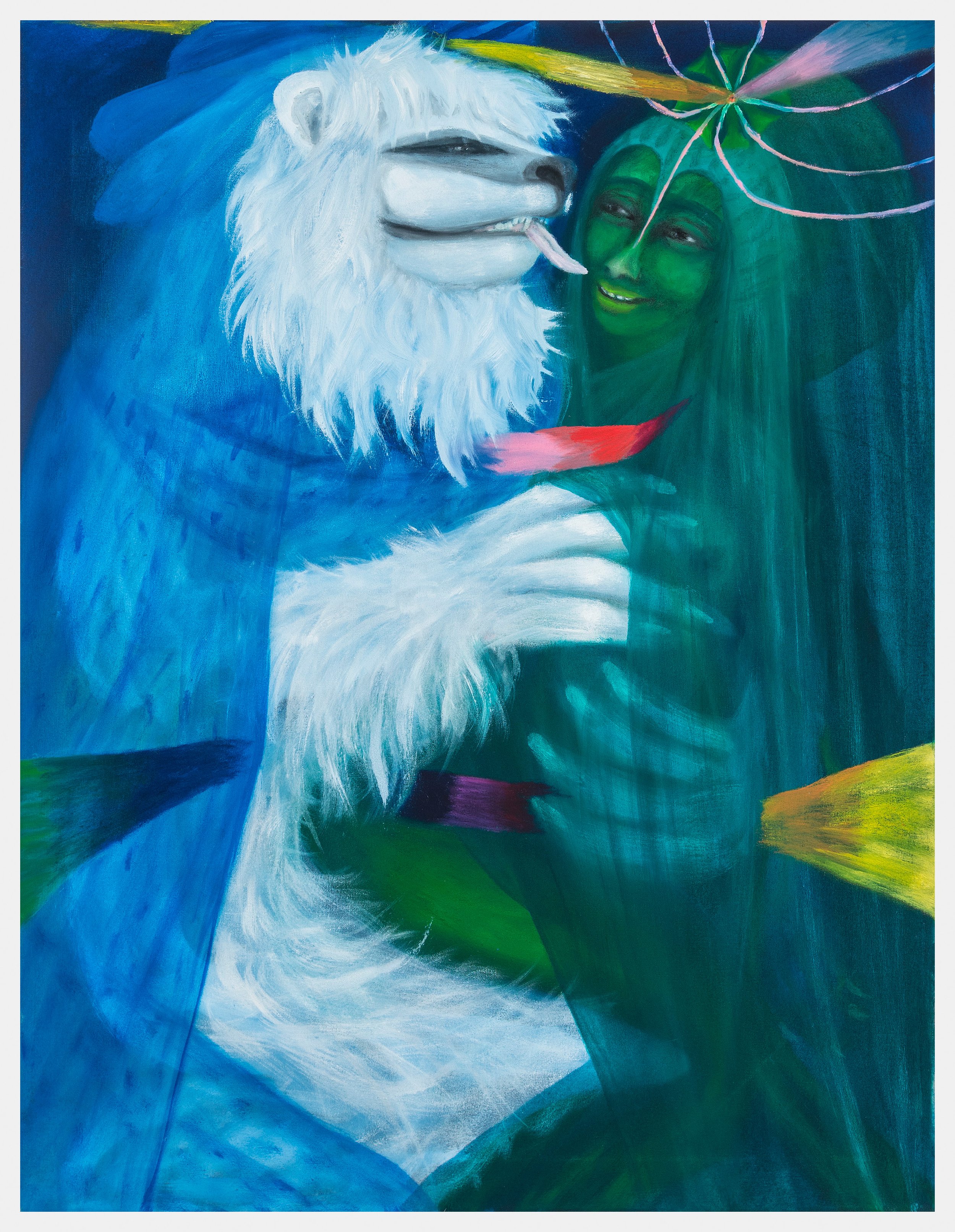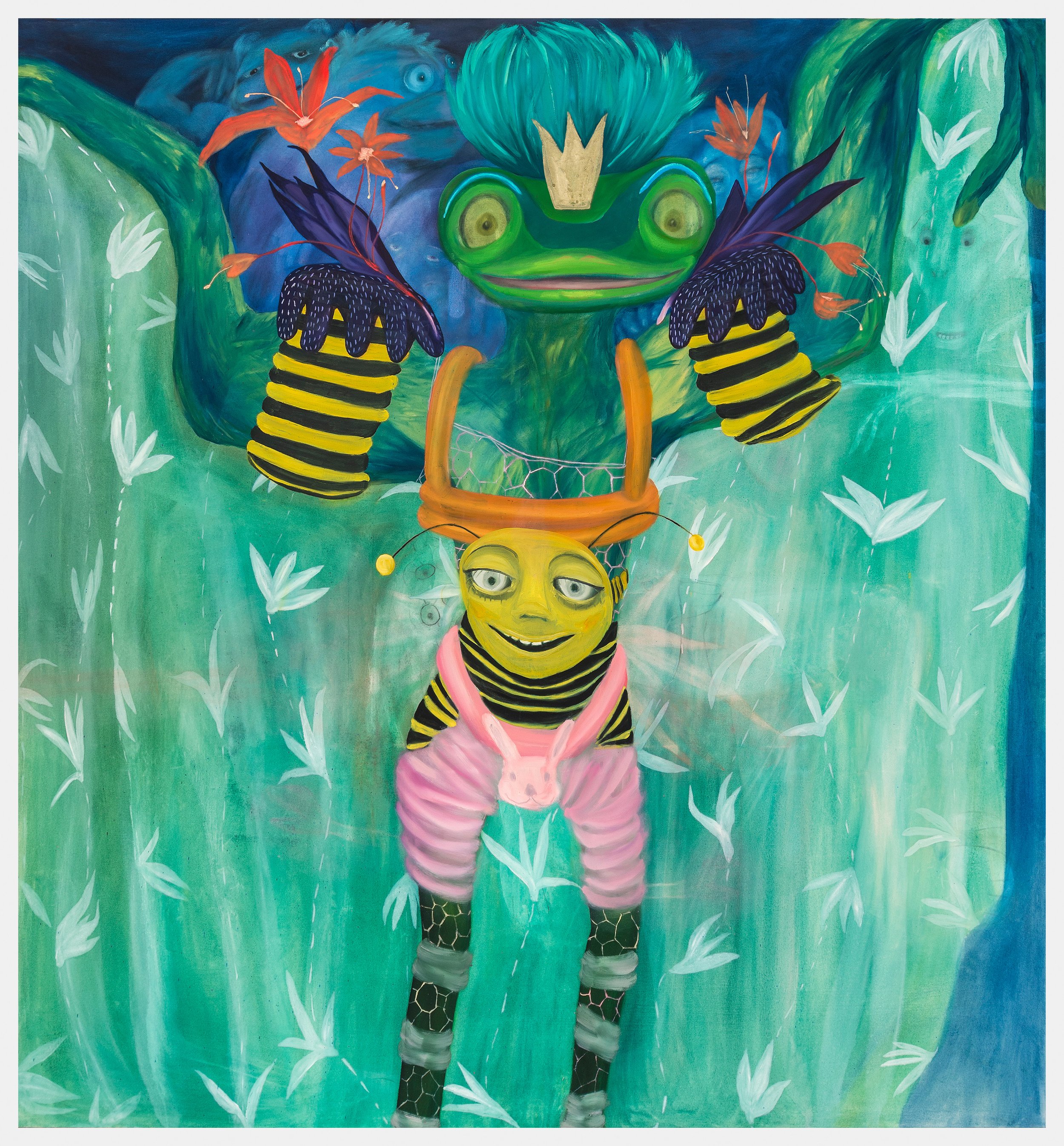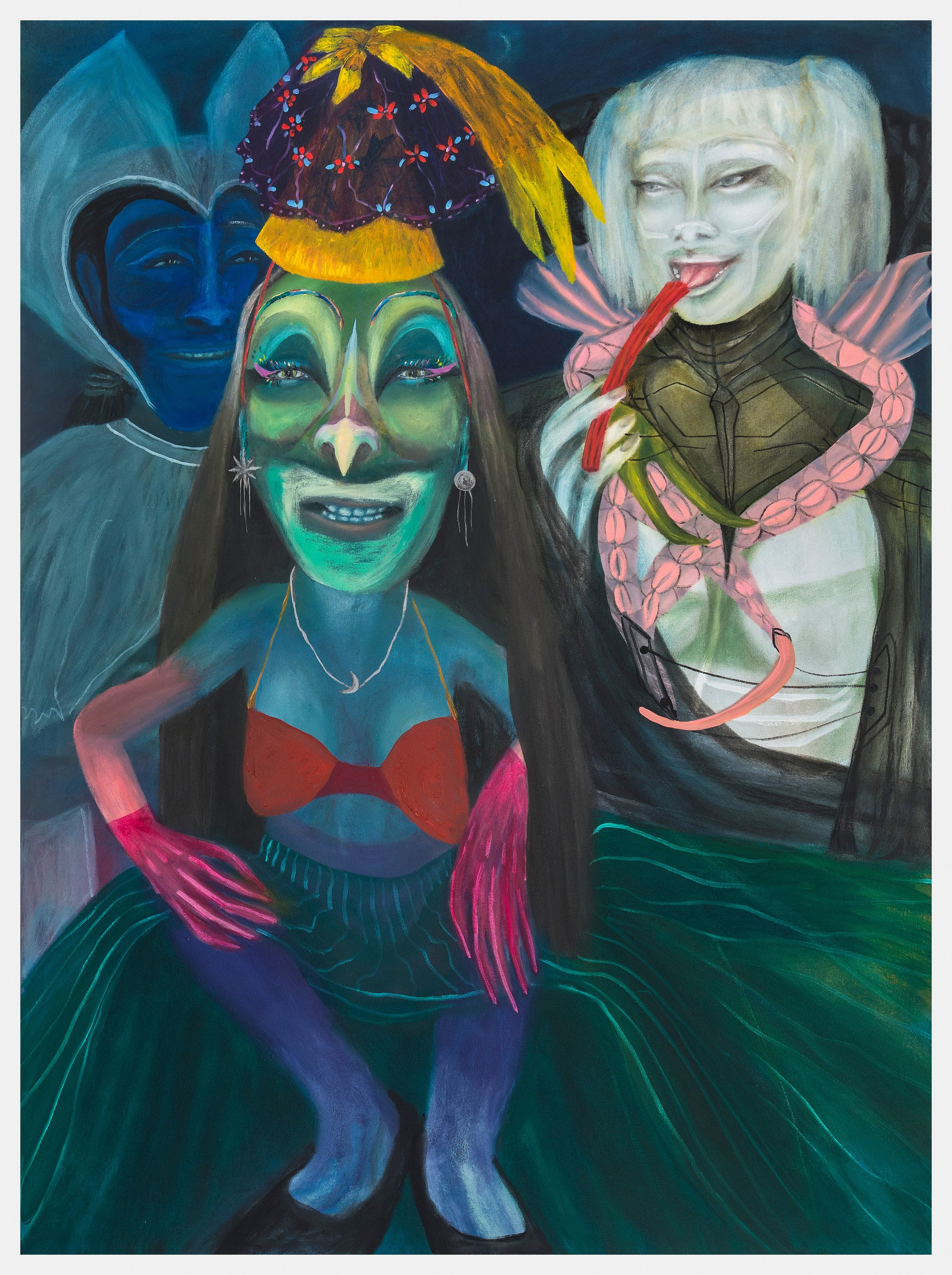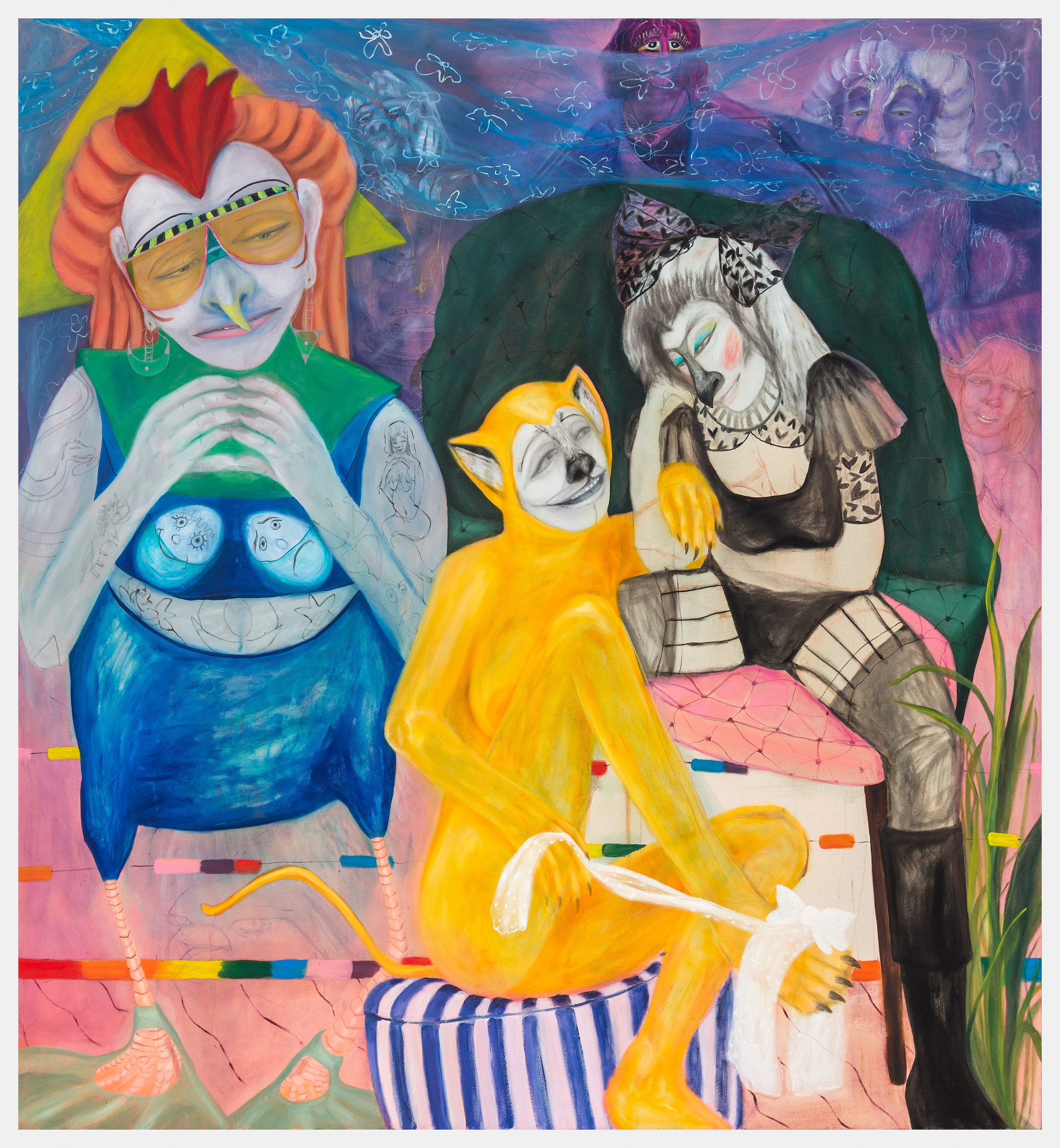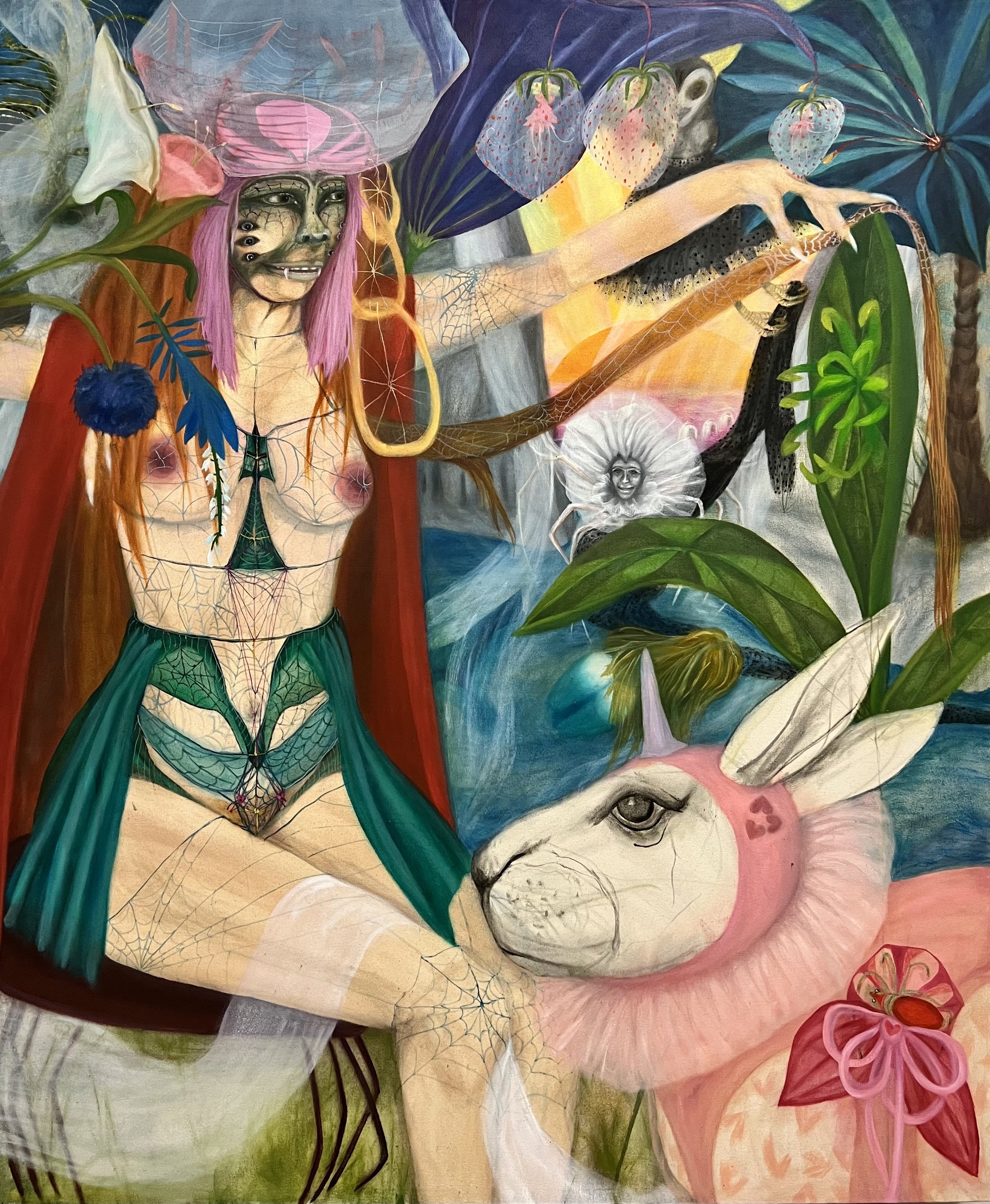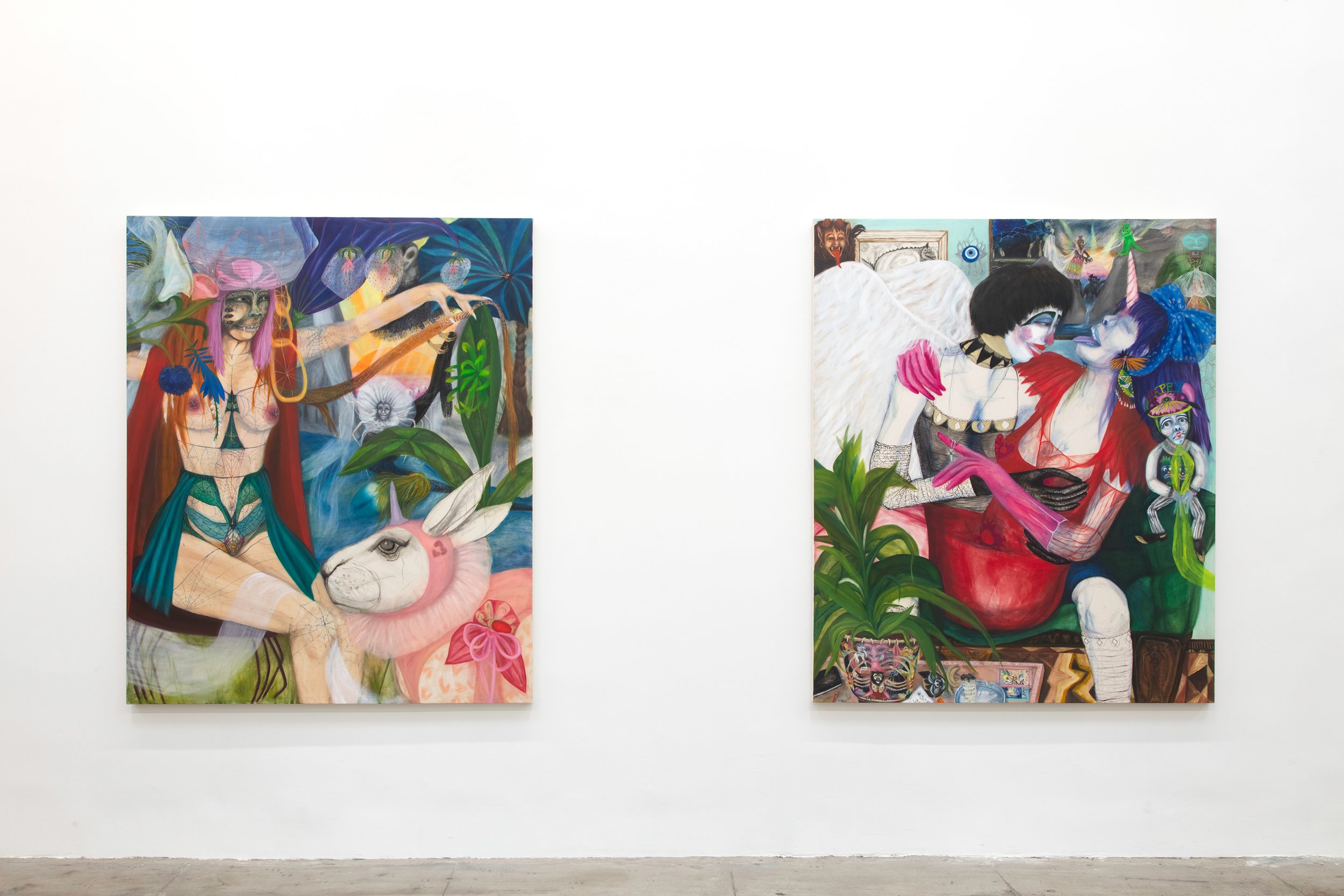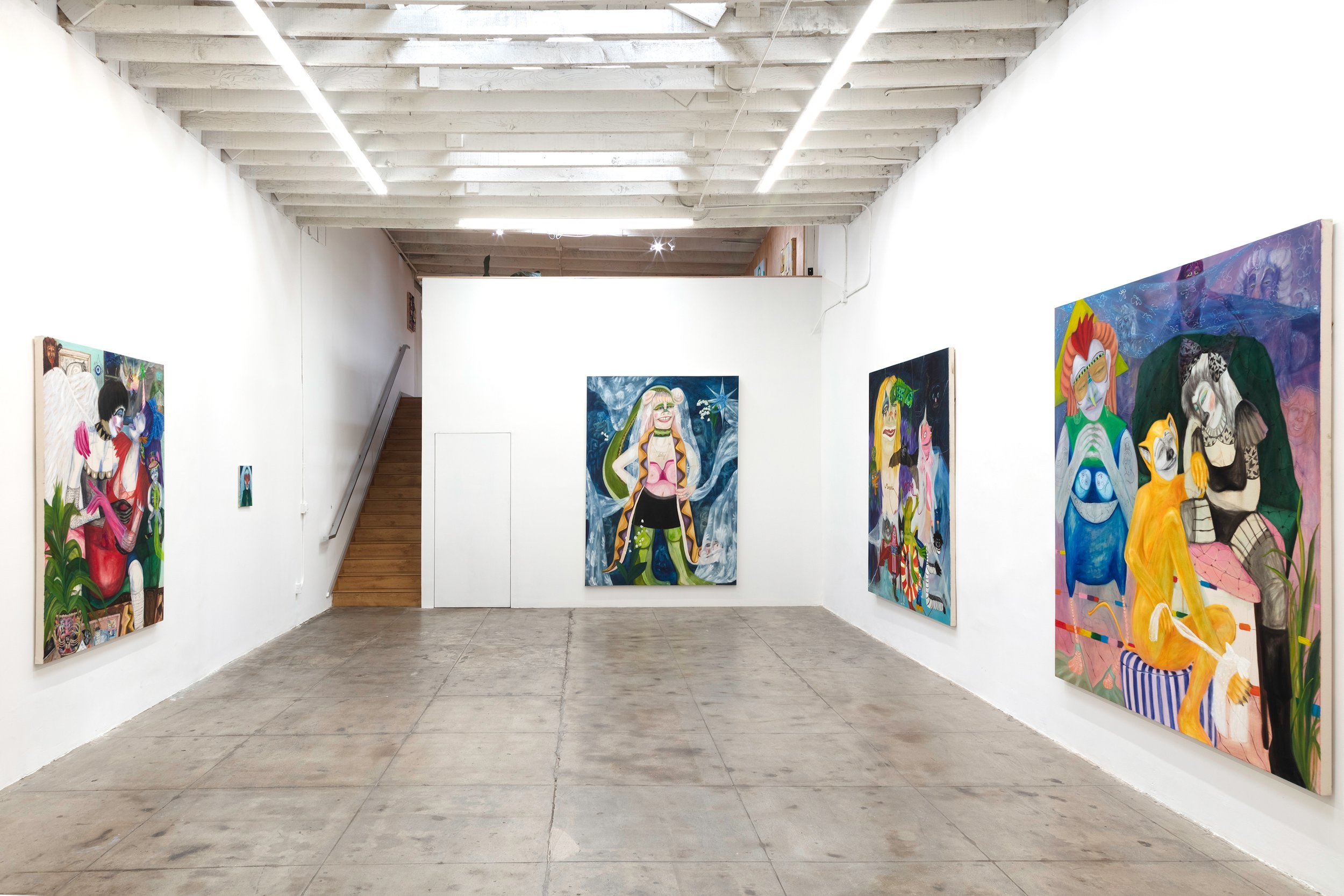“Mire Lee: Black Sun,” 2023. Exhibition view: New Museum, New York. Courtesy New Museum.
Photo: Dario Lasagni
text by Hannah Sage Kay
Entering Mire Lee’s installation at the New Museum—passing through plastic strip curtains into a moist, greenhouse-like environment—seems, I can only imagine, like a trip up a vaginal canal. It recalls one time that, in warm, sud-less water, I looked down to see a brownish-red gelatinous mass emerge between my legs. With an ovular center and porous, mane-like tentacles, it moved, not in a bloody mess, but as a neatly self-contained collection of blood clots and uterine lining. The wet porous fabric that lines the plastic walls of Lee’s installation recalls this same murky, brown fluid that accompanies the expulsion of an egg and, not at all coincidentally, overlarge egg sacks dangle from the ceiling, entwined with rope, metal chains, and what looks like a prematurely formed exoskeleton.
Strange whirring, rotating devices—simultaneously technological and organic—churn in mud-filled recesses of the grated metal floor below. One such contraption wound with sodden, fleshy cables rotates over a pool of dense brown liquid: a loose member makes a distinctly phallic flop; an art handler man-handles the entrails; a viewer becomes a casualty of the splash impact—its localization on the front of his pants unveiling the very male shame at the heart of all female subjugation. A cum shot to the patriarchy? A territorial spraying? A cyborgian golden shower? However you spin it, I like to think the installation staked its claim, via a forced confrontation with those bodily functions and oft-taboo fluids that make up the stuff of all life and sex, feces and death.
This pseudo-maturation chamber, in all its arousing repulsiveness, posits the female body as the original site of body-horror as a genre and sexual stimulant—not because any real violence has occurred, but rather because violence is inextricably associated with the female experience: vaginas tear in childbirth, babies emerge as purple as eggplants, walking down the street is a physical liability. And yet, the genius of Lee’s installation is its unabashed admission that depravity is sexy. It recalls those paraphiliac misadventures recounted in Georges Bataille’s The Story of the Eye, where omorashi fetishism and corporeal mutilation are the result of adolescent musings; it simultaneously transports you inside an episode from Star Trek: Enterprise, wherein Captain Archer develops an obsessive interest in the unhatched Xindi-Insectoid eggs hanging from the ceiling of an abandoned ship after one sprays him with a neurotoxin. What is, there, a simple illustration of the chemically-induced power of maternal instincts and the resulting shame when those same instincts are displayed by a man, here manifests as a voracious unease: the uncanny pleasure and discomfort of an unfulfilled orgasm.
Titled after Julia Kristeva’s Black Sun, Lee’s installation extends Kristeva’s characterization of melancholia to the asshole and all its attendant forms as another forbidden, shameful, non-speakable void in which language and symbology no longer function, but that same characterization can, it seems, engulf our prescribed and highly shielded perspectives of the female body. So, while many may simply be disgusted by Lee’s exhibition and what it stands for, I instead see a feminist refusal to quiet those life-giving functions that in the secret recesses of the mind invariably turn us on.

